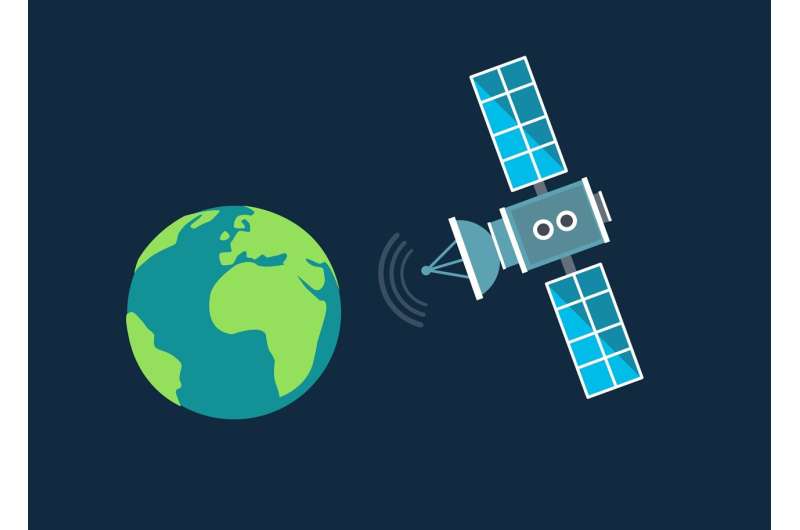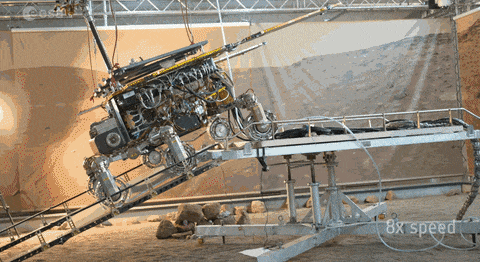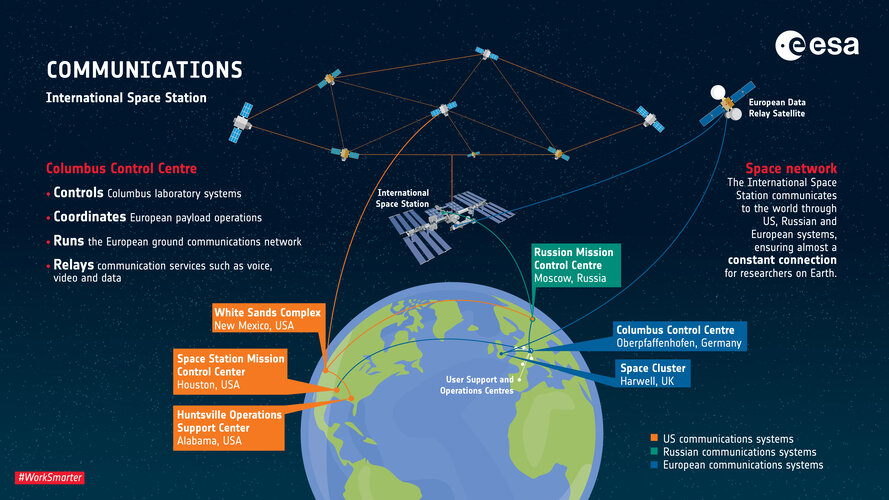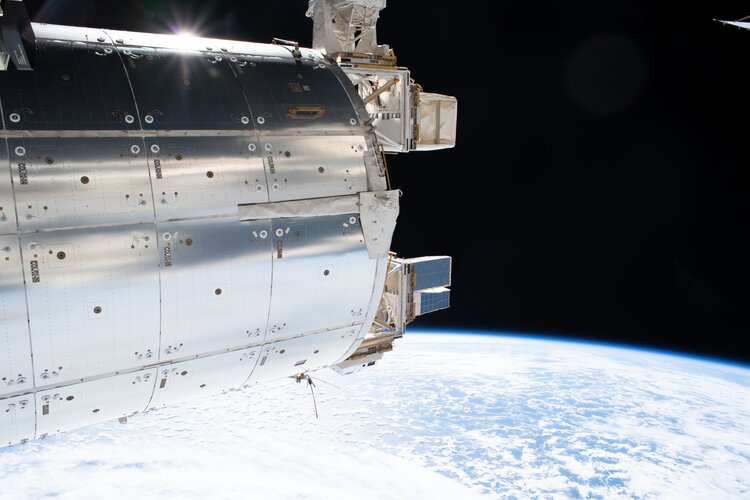
Copernical Team
Curiosity measures intriguing carbon signature on Mars
 After analyzing powdered rock samples collected from the surface of Mars by NASA's Curiosity rover, scientists have announced that several of the samples are rich in a type of carbon that on Earth is associated with biological processes.
While the finding is intriguing, it doesn't necessarily point to ancient life on Mars, as scientists have not yet found conclusive supporting evidence of
After analyzing powdered rock samples collected from the surface of Mars by NASA's Curiosity rover, scientists have announced that several of the samples are rich in a type of carbon that on Earth is associated with biological processes.
While the finding is intriguing, it doesn't necessarily point to ancient life on Mars, as scientists have not yet found conclusive supporting evidence of Newly discovered carbon may yield clues to ancient Mars
 NASA's Curiosity rover landed on Mars on Aug. 6, 2012, and since then has roamed Gale Crater taking samples and sending the results back home for researchers to interpret. Analysis of carbon isotopes in sediment samples taken from half a dozen exposed locations, including an exposed cliff, leave researchers with three plausible explanations for the carbon's origin - cosmic dust, ultraviolet degr
NASA's Curiosity rover landed on Mars on Aug. 6, 2012, and since then has roamed Gale Crater taking samples and sending the results back home for researchers to interpret. Analysis of carbon isotopes in sediment samples taken from half a dozen exposed locations, including an exposed cliff, leave researchers with three plausible explanations for the carbon's origin - cosmic dust, ultraviolet degr HGC offers ultra-low latency Eyeball-as-a-Service across Asia
 HGC Global Communications Limited (HGC), a fully-fledged ICT service provider and network operator with extensive global coverage, and Kacific Broadband Satellites Group (Kacific), a next-generation broadband satellite operator that provides affordable, high-speed broadband access to Asia Pacific, have collaborated to boost critical connectivity across emerging markets in the Philippines, provid
HGC Global Communications Limited (HGC), a fully-fledged ICT service provider and network operator with extensive global coverage, and Kacific Broadband Satellites Group (Kacific), a next-generation broadband satellite operator that provides affordable, high-speed broadband access to Asia Pacific, have collaborated to boost critical connectivity across emerging markets in the Philippines, provid Airbus teams with Japan telcos to study connectivity services from high-altitude platforms
 Airbus, Nippon Telegraph and Telephone Corporation (NTT), NTT DOCOMO, and SKY Perfect JSAT have jointly begun studying the feasibility of collaborating on future high-altitude platform stations (HAPS)-based connectivity services as part of a future space-based wireless connectivity ecosystem.
Launched with a memorandum of understanding (MOU), the study aims to identify the early deployment
Airbus, Nippon Telegraph and Telephone Corporation (NTT), NTT DOCOMO, and SKY Perfect JSAT have jointly begun studying the feasibility of collaborating on future high-altitude platform stations (HAPS)-based connectivity services as part of a future space-based wireless connectivity ecosystem.
Launched with a memorandum of understanding (MOU), the study aims to identify the early deployment Palomar survey instrument analyzes impact of Starlink satellites

Since 2019, SpaceX has been launching an increasing number of internet satellites into orbit around Earth. The satellite constellation, called Starlink, now includes nearly 1,800 members orbiting at altitudes of about 550 kilometers. Astronomers have expressed concerns that that these objects, which can appear as streaks in telescope images, could hamper their scientific observations.
To quantify these effects, a team of researchers studied archival images captured by the National Science Foundation (NSF)-funded Zwicky Transient Facility (ZTF), an instrument that operates from Caltech's Palomar Observatory near San Diego. ZTF scans the entire night sky every two days, cataloging cosmic objects that explode, blink, or otherwise change over time. This includes everything from supernovae to near-Earth asteroids. The Zwicky team members say they decided to specifically study the effects of Starlink satellites because they currently represent the largest low-Earth orbit, or LEO, constellation, and they have well-characterized orbits.
The findings, reported in the January 17 issue of The Astrophysical Journal Letters, shows 5,301 satellite streaks appear in archival images taken between November 2019 and September 2021. The streaks are most apparent in so-called twilight observations, those taken at dawn or dusk, which are important for finding near-Earth asteroids that appear close to the sun in the sky.
Steady driving towards ExoMars launch

The first simulation of the ExoMars Rosalind Franklin rover driving off its landing platform closed out an incredible year of preparations as the mission now marches with confidence towards a September launch.
Space Station communications infographic
 Image:
Space Station communications infographic
Image:
Space Station communications infographic Crown aurora borealis
 Video:
00:00:55
Video:
00:00:55
Timelapse video made during ESA astronaut Thomas Pesquet’s second mission to the International Space Station, “Alpha” around 4 November 2021. The camera was setup to take pictures at intervals of two a second, and the pictures are then edited into this video that plays at 25 pictures a second. The video is around 12 times faster than real speed.
Thomas shared this video on social media explaining that the pictures were taken from the docked Crew Dragon spacecraft windows and it was the strongest aurora the crew had seen during their six months ins space.
Over 200 experiments were
Space science in 360° | Cosmic Kiss
 Video:
00:00:00
Video:
00:00:00
Immerse yourself in 360° of science with ESA astronaut Matthias Maurer as he prepares an experiment to examine how human cells behave in weightlessness.
The Cytoskeleton experiment is a biological study that aims to determine the changing function of RhoGTPases when in vitro cell cultures are exposed to weightlessness. It will run in the Biolab facility of Europe’s Columbus laboratory.
In this video, we see Matthias remove Cytoskeleton cell cultures from the Minus Eighty Lab Freezer ISS (MELFI) and prepare them in the Life Sciences Glovebox (LSG) before installing the experiment in Columbus’s BioLab.
Matthias was launched to the International
Data-relay system connects astronauts direct to Europe

Astronauts on board the International Space Station are connecting straight to Europe at light speed, thanks to the European Data Relay System.
